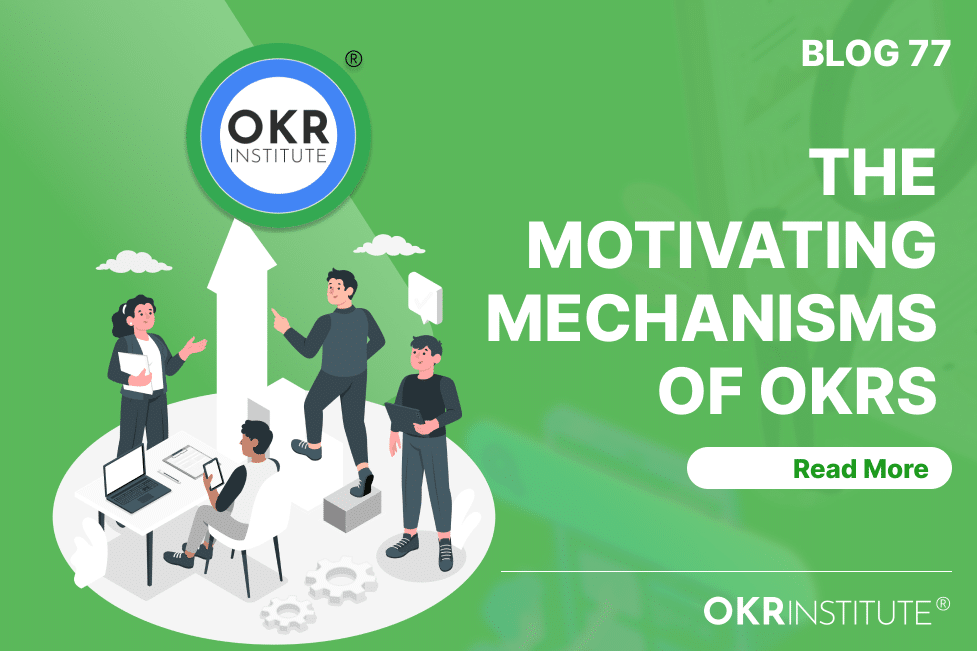OKR vs. SCRUM: Which One is Better as The Ruling Tools to Achieve Goals

It is used to foster company goals, and it productively improves collaboration and correspondence across an organization. Like OKRs, SCRUM, as well as OKRs, is used to arrange and define objectives. It has become so well known in numerous famous companies. It is inferable from its fiction to assist groups in accomplishing very aggressive goals in an exceptionally brief timeframe. thus, this article will elaborate framework which consists of OKR and SCRUM differentiation as well as their similarities to achieving goals
OKR (Objective Key Results) is a method of goal formulation and planning that helps a team, individual, or organization define the goals measurably and track how they are going. OKR is designed to help organizations set long-term goals in days instead of months.
The nature of OKR is also different. OKR has measurable, flexible, transparent, and aspirational properties. Usually, goals are settled by a leader, and later all team members can find out what other team members are doing to achieve these goals. That’s why it’s called transparent. Preparing this OKR can be said to be simple, but it requires a fast work rhythm. The perspective and creativity of team members will be very beneficial for the team to achieve common goals.
SCRUM is a project management method commonly used to develop software and other complex products. The SCRUM framework is light and agile, making it suitable for solving problems quickly. SCRUM’s main focal point emphasizes the process framework and not methods. The framework makes SCRUM relevant, unique, and highly effective in today’s global scenario.

OKR vs. SCRUM and their similarities part in achieving goals
Key Objectives and Results are regularly characterized in the ongoing quarter and get straightforwardly from the organization’s targets and mission. SCRUM manages everyday undertakings that assist us in withdrawing nearer to our objective. Utilizing OKRs to finish scrum helps us with choosing what functionalities to create when we focus on highlights that we make. We use emotional measures. However, with OKRs, we have an objective basis: does this component carry us nearer to the objective?
After making the OKR, what is more, important is precisely in the supervision or checking section carefully the implementation of the action plan to achieve the OKR. The performance of control is where the ritual of monitoring activities becomes very important. The action plan is where the team’s coaching process is carrying. In the end, teamwork that feels like one and one goal is more important. There is Trust or Trust between members with each other. There is a quality of healthy conversation, and everyone dares to express their thoughts freely. There is a process of giving constructive feedback, and there is also genuine recognition.
The existence of OKR for Company Compares to SCRUM.
OKR helps the team in the company to evaluate efforts to achieve targets. OKR is a unique work management system because by determining OKR, a company can be sensitive and responsive to changes. This is because the marks are made only for the near term. I feel that OKR is more than just setting goals and specific ways of measuring. In my opinion, OKR is broader than that. OKR can form a mindset in the rituals of our daily work system. So if I may define OKR as a systematic method used to determine goals (goal-setting) and how to measure the achievement of these goals. OKR will help focus the work priorities needed to achieve these goals and how the ritual activities are out to monitor the execution of the action plan.
The most important part is not just making the OKR. It’s the execution and monitoring of the OKR. It’s like this is not a sprint but a marathon.
Although, SCRUM processes limit independence since they center around the capacity of the group to convey the usefulness wanted by the customer. When OKR is executed close to SCRUM, the emphasis is on satisfying the functionalities characterized in Key Results, beginning from the customer-defined features. When altering our outlook and going from “Convey the costumer’s ideal features” to “Achieve Key Results that have been concurred with the costumer,” colleagues can depend on their independence to satisfy their OKRs, considerably more than while working for another person’s objectives.
Pros and Cons of Using OKRs and SCRUM
The SCRUM technique may be a proficient framework for quickly creating complex tasks in measured organization objectives.
Objectives and characterizing
The SCRUM cycle has no single definition for objectives. Furthermore, it appears that “objectives” are simple, and there’s a gamble in being unable to characterize them. Workers unexpectedly lose lucidity from one section, and there’s no shared comprehension across groups of what every objective indeed involves. OKR require the two Objectives and Key Result made based on SMART standards, giving complete transparency to each group and person
Achievement standards explanation
Again and again, a scrum venture’s prosperity is estimated by quality. Butchers are not a reasonable way to decide the nature of the occupation. To address the issue, OKRs are entirely centered around the result and, generally speaking, business results.
The OKR technique compensates for everything that the scrum interaction typically needs.
The case of OKR as main character tools for Google
In 2012, Google conducted research called Project Aristotle to find the secret to forming “The Dream Team.” It turns out that building a great team is not determined by just gathering the best people. The reality is not that simple. His research concludes that in great teams, it is shown by the sensitivity between team members, and more importantly, they listen to each other.
At the end of these findings, we can utilize the two frameworks. OKRs assist groups with articulating the general objectives for an association or group. Scrum outfits groups with an interaction for following through on complex undertakings. It is critical that the schemes being chipped away at by Scrum groups are to support the objectives communicated in the OKRs.
Related Courses
Popular Posts
Tags
#OKR
#OKR Coaching
#OKR Coach







